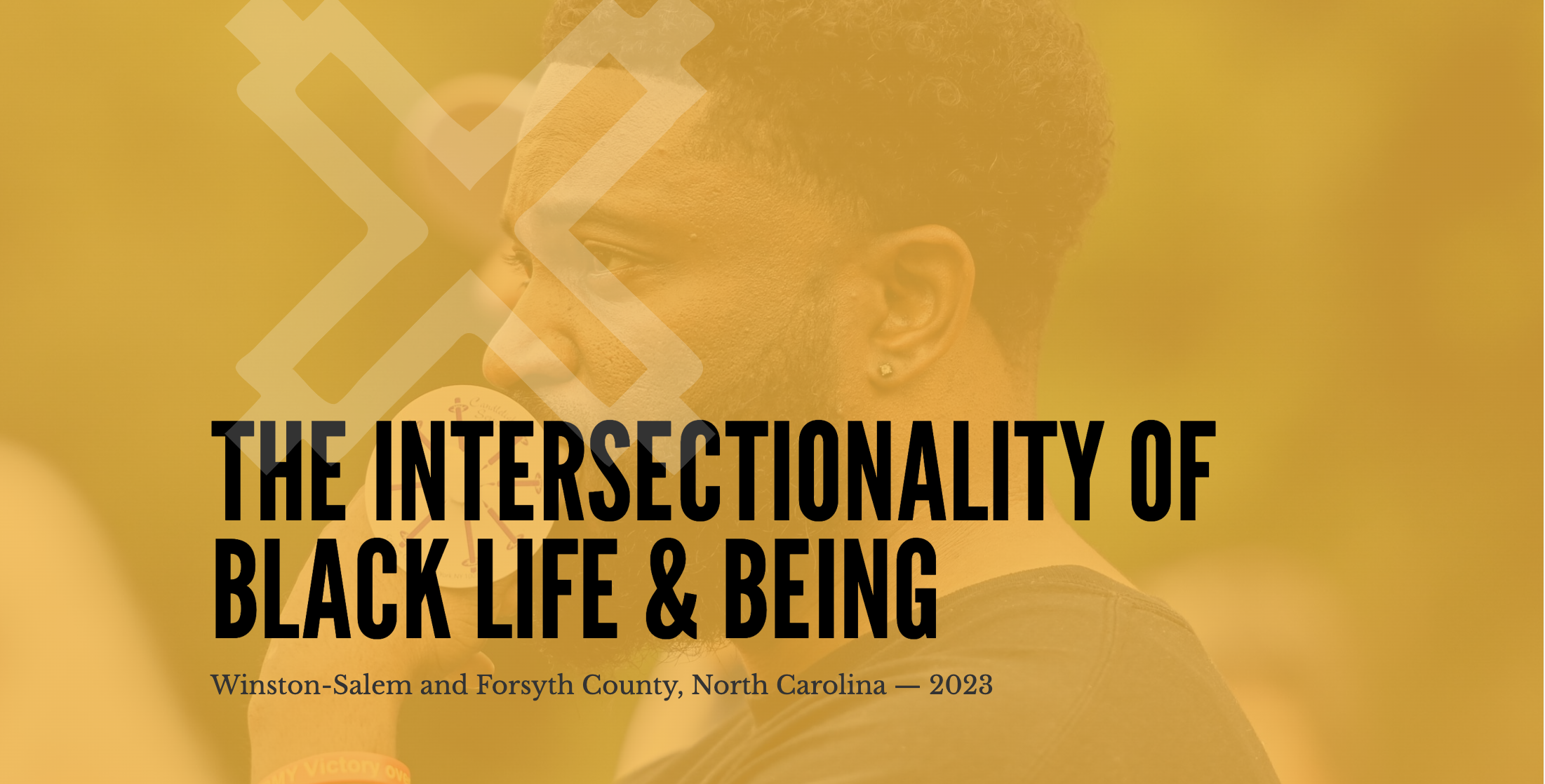The report is published as an interactive, web-based microsite created at the direction of the research participants. The microsite weaves together many forms of content, such as youth voices, West African Adinkra symbols and Kente cloth patterns, community-sourced photography, quotes from Black luminaries, and video interviews. The result is a ‘tapestry of content’ that aims to capture the vibrancy of Black cultural abundance in Winston Salem and Forsyth County.
In addition to the design, the very structure of this report sets it apart from previous work. The report’s main sections came directly from the qualitative data gathered from the community research participants — derived from the lived experiences and perspectives of the community participants, ensuring that the report’s structure and content reflect the community’s voice.
This report illustrates what is possible when the people closest to the issues being studied are not shut out of the research process, and Forsyth Futures is proud of what we have helped to produce through this partnership. A key insight from this pilot effort in approaching research more inclusively and equitably is that when the people closest to the issues being studied are engaged deeply and authentically in the process, the opportunity for community benefit is maximized, and the work has a greater potential for impact because people in community feel a greater sense of ownership and buy-in.
Traditionally, Forsyth Futures reports have been largely crafted by staff without direct input from the communities they aim to serve. This approach lacks the depth and nuance that can only be achieved from engaging with the lived experiences of those directly affected by the issues being researched. We realize that our past reports, both in how research was gathered and how reports were produced, disseminated, and used, have caused harm and impacted our organization’s relationship with the community, historically and currently.
While the publication of The Intersectionality of Black Life and Being marks a step in a positive direction, there is still much for Forsyth Futures to grapple with. We must come to terms with a body of past and current work that has, in many ways, been harmful and extractive of people and groups in community. We must also work to reflect on our responsibility to serve and benefit the community, and begin to articulate a new vision and strategic goals that can make the way we show up and do our work transparent and accountable to the community we serve.
In our next blog post, we will share more about what we are learning through this process and our emerging vision and strategic goals. Thank you for reading!


